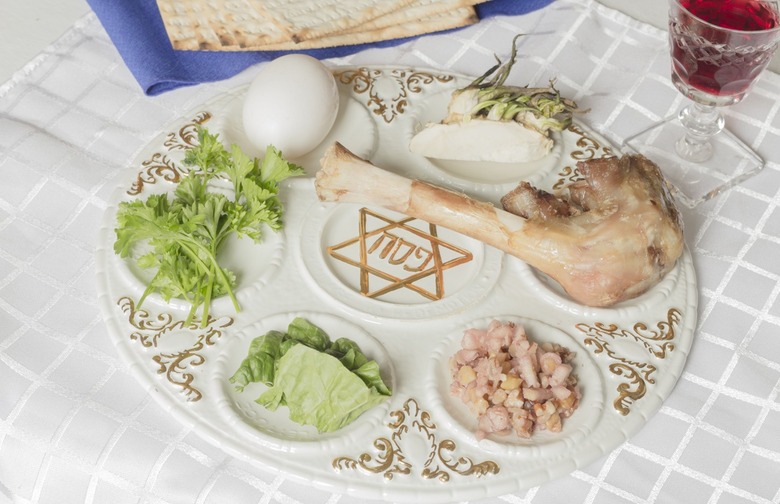What Does That Passover Seder Symbolism Really Mean?
Every year, Jewish families all over the world will gather together on the first night of Passover for a traditional Seder meal. The table will be set beautifully, a classic meal will be enjoyed, and the evening will proceed as the Seder rituals demand. You already know that there's a Seder plate on the table filled with items such as a lamb shank bone and bitter herbs, but you may not know why they're there. What does that roasted egg really mean? Why is an extra place set for prophet Elijah? Why are the greens dipped in salt water before being eaten? We're here to decode all the Seder symbolism, so that you really understand this festive meal.
What Does That Passover Seder Symbolism Really Mean? (Slideshow)
Passover commemorates the Jewish people's freedom from slavery in Egypt during the time of Moses. Over the evening, the story of the Exodus is recited in a very fixed way, according to a special text called the Haggadah, which is a feature at every Seder. This text splits the evening into 15 parts, which symbolizes the 15 steps of the Temple of Jerusalem, creating a very set ritual, which encapsulates the Passover dinner.
Like every Jewish holiday, Passover is filled with important food-related traditions. It is a festival of both feasting and abstaining, as it is focused around Seder and the Passover dinner, but the meal is limited by various ingredient restrictions, which have come to be known collectively as foodstuffs that are kosher for Passover. The various food items, both edible and non-edible, on the Seder plate and at the Seder table, are all rich with symbolism, as Jewish families spend the evening commemorating their freedom from slavery, and the traumatic years their ancestors survived.
